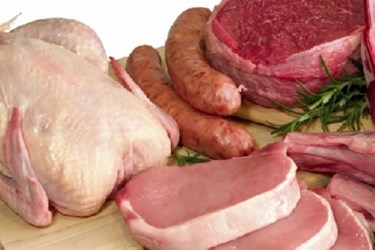Study Takes Aim At Meat And Poultry Recall And Prevention Costs

By Sam Lewis

Recent research from Kansas State University explores five factors that have major financial implications for companies enduring meat and poultry recalls.
Obviously, safety is a top priority for food producers. Because of this, food makers are spending more and more on technology that helps limit various types of contamination. However, each company has its tipping point regarding what it is willing to spend to give consumers safe, affordable food products while continuing to be a thriving business. “The more a company knows about the anticipated impact of a recall event, the better it can make a decision about adopting new food safety protocols, new technologies or new surveillance methods to reduce the probability of a food safety breach,” says Ted Schroeder, professor of agricultural economics at Kansas State University.
Schroder and Veronica Pozo, assistant professor of applied economics at Utah State University, have found that meat and poultry firms facing a recall have several issues that determine how the recall will affect that company’s bottom line. Most notably is the recall’s class. Class I recalls, where a there is a reasonable probability that consuming the product will cause serious health consequences, have a greater impact on a company’s bottom line than Class III recalls, where consuming the product will not likely cause any adverse health consequences. Other elements that could affect the company include how much product is being recalled, how big the company is, the company’s prior experience with dealing with recalls, how recently the company’s last recall occurred, and if the amount of media coverage on the company’s food-safety incidents.
The duo’s research involved recall data from U.S. Department of Agriculture’s Food Safety and Inspection Service (FSIS) between 1994 and 2013. Research revealed more than 1,200 meat and poultry recalls in that span, with 163 recalls coming from more than 31 public companies. Despite this small number, these 163 companies were responsible for 277 million of the 638 million pounds, 43 percent, of recalled meat and poultry in that timeframe.
Financial data surrounding the direct effects of a recall is difficult to come by, but it’s by no means a small cost. “Calculating the actual, physical cost of a recall can be quite daunting. You have to track volume of product, determine if the product was disposed of, or the firm got an alternative value for it, and the cost of all people involved, including sales losses and liability costs,” says Pozo. “Our claim is all private costs — costs the company itself ends up realizing — will ultimately be reflected in the stock price through the value of the firm,” according to Schroeder. “The stock market is efficient; meaning it rapidly incorporates information and embeds it into the stock values. It is a widely accepted method for evaluating event studies.”
However, stock prices don’t include public costs, e.g. a person sickened from consuming a recalled food product. The costs associated with that person never reflect on the firm. “Our goal was to look at individual, private firm costs, because if I’m a company that’s in the food processing or merchandising segment, I need to have a sense of what the impact of these (recall) events can be on my company,” says Pozo. “If we show firms how costly a recall can be, then they will be able to conduct a cost-benefit analysis to decide if it’s worth it to implement additional food-safety technologies.”
Finally, Pozo adds the study offers insight to investors regarding the importance of learning about a food-making company’s food-safety procedures. “I’ve seen publicly traded companies that went bankrupt after one recall,” says Pozo. “And although companies do as much as they can to avoid these types of events, food-safety outbreaks are still possible. Firms must have a good plan in place. Investors must find out about those plans before investing.”
